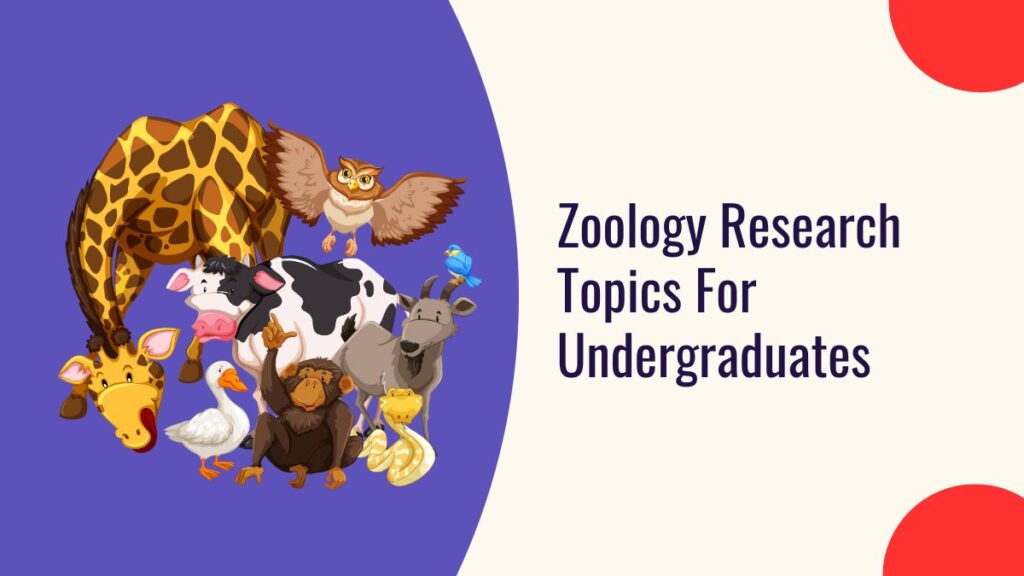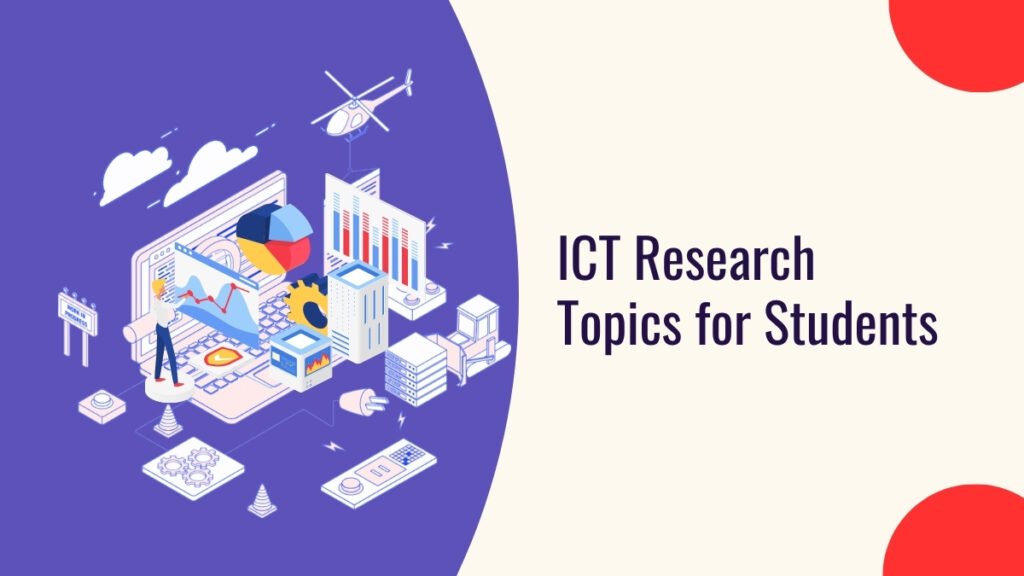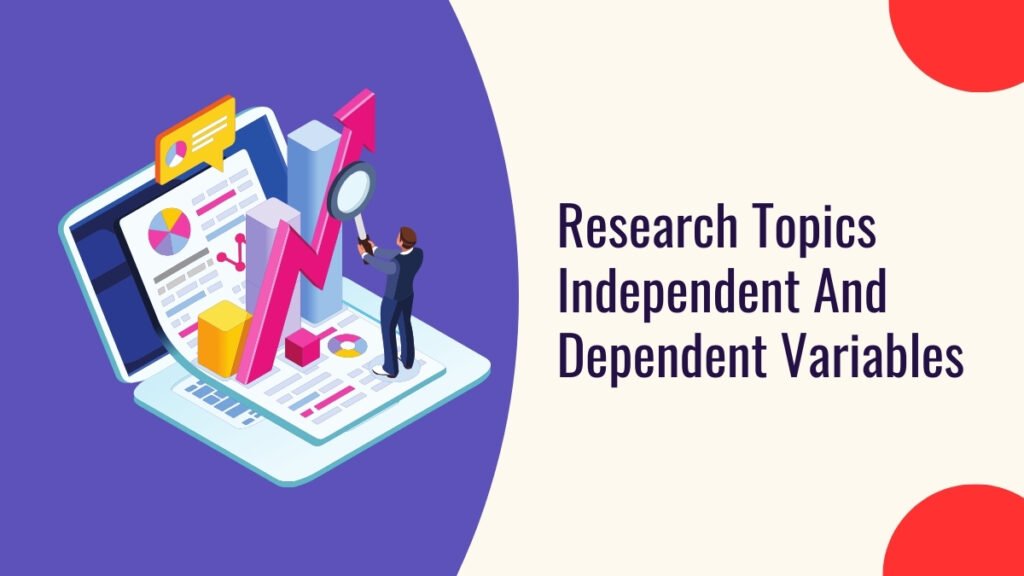Looking for cool zoology research topics for undergraduates? Check out ideas on animal behavior, conservation, and evolution to kickstart your next project.
Ever wondered how animals think, act, or adapt to their world? Zoology helps us explore how animals live and interact with their environment.
Did you know many animal species are still waiting to be discovered? There’s so much more to learn, and your research could help!
If you’re an undergrad looking for new ideas, keep reading. Let’s find some fun topics for your next zoology project!
Zoology Research Topics For Undergraduates PDF
Tips for Choosing a Zoology Research Topic
Here are some easy tips for picking a zoology research topic:
Pick What You Like
- Choose something you’re interested in.
- It’s easier to research topics that excite you, like animal behavior or conservation.
Find Something New
- Look for animals or behaviors that haven’t been studied much.
- This helps make your research unique and fresh.
Keep It Simple
- Choose a topic that fits your time and resources.
- Avoid complicated topics that might need too much time or equipment.
Think About Impact
- Consider how your research could help animals or the environment.
- Focus on areas that could lead to real-world changes, like conservation.
Use What You Have
- Pick a topic that works with the resources you have access to.
- Make sure you have the tools you need to complete the research.
Ask for Ideas
- Talk to professors or mentors for help.
- They can offer suggestions and guide you to great topics
Zoology Research Topics For Undergraduates
Here are some of the outstanding zoology research topics for undergraduates
Animal Behavior
- Mating habits in amphibians.
- Wolf pack social structure.
- Dolphin communication.
- Bird migration and environmental factors.
- Predator-prey behavior.
- Aggression in mammals.
- Insect colony social structure.
- Cooperative behavior in primates.
- Animal learning and behavior.
- Noise pollution and animal communication.
Ecology
- Habitat destruction effects on wildlife.
- Keystone species in ecosystems.
- Climate change impacts on animals.
- Pollinators and biodiversity.
- Invasive species’ effects on ecosystems.
- Water quality and aquatic life.
- Animal adaptations to extreme environments.
- Forest fragmentation effects.
- Scavenger roles in ecosystems.
- Protecting biodiversity hotspots.
Conservation Biology
- Strategies for conserving endangered species.
- Importance of wildlife corridors.
- Human-wildlife conflict and solutions.
- Poaching’s effect on species.
- Seed dispersal by animals.
- Species reintroduction programs.
- Marine species conservation.
- Overfishing’s impact on marine life.
- Zoos’ role in conservation.
- Ethical wildlife conservation practices.
Physiology
- Cold-blooded animals’ circulatory system.
- Digestive systems of herbivores vs carnivores.
- Amphibian endocrine regulation.
- Temperature effects on reptiles’ metabolism.
- High-altitude adaptations in animals.
- Mammal reproduction and hormones.
- Immune system differences in animals.
- Insect movement and neural control.
- Thermal regulation in desert animals.
- Hibernation and energy conservation.
Genetics
- Animal coat color genetics.
- Genetic diversity in isolated populations.
- Animal adaptation to environmental stress.
- Role of epigenetics in development.
- Genetic disorders in animals.
- Gene flow in endangered species.
- Inbreeding and genetic health.
- Genetic tools for wildlife conservation.
- Mitochondrial DNA in animal studies.
- Mutations and evolution.
Evolutionary Biology
- Speciation in birds.
- Camouflage in marine animals.
- Evolution of migration in animals.
- Natural selection in response to climate change.
- Social evolution in mammals.
- Venom evolution in reptiles.
- Nocturnal adaptations in animals.
- Sexual selection in evolution.
- Amphibians’ evolutionary strategies.
- Evolution of flight in birds.
Marine Biology
- Coral reef biodiversity.
- Ocean acidification’s impact on marine life.
- Marine invertebrates’ ecological role.
- Mammal migration in oceans.
- Deep-sea creatures’ behaviors.
- Overfishing’s impact on fish populations.
- Shark conservation efforts.
- Sea turtles’ role in marine ecosystems.
- Marine food webs.
- Plastic pollution’s effects on marine life.
Insect Biology
- Bees as pollinators.
- Ant colonies’ social behavior.
- Insect communication via pheromones.
- Butterfly life cycle.
- Insects’ role in decomposition.
- Insect defense mechanisms.
- Monarch butterfly migration.
- Insects in agriculture: pests and benefits.
- Impact of insecticides on insect populations.
- Adaptations of insects to various climates.
Parasitology
- Parasitic worm life cycles.
- Wildlife parasites’ impact.
- Zoonotic diseases and humans.
- Parasites in freshwater environments.
- Host-parasite evolution.
- Ecological role of parasites.
- Immune response to parasites.
- Parasitic disease control in livestock.
- Disease transmission through vectors.
- Parasite resistance evolution.
Zoological Taxonomy
- Amphibian classification.
- Molecular markers for species identification.
- Reptile phylogeny.
- Deep-sea organism classification.
- Arthropod biodiversity.
- Fossils and species identification.
- DNA barcoding for species.
- Morphology’s role in taxonomy.
- Taxonomy based on evolutionary relationships.
- Revisions in taxonomic categories.
Bird Biology
- Birds in seed dispersal.
- Evolution of bird beaks.
- Songbird migration.
- Bird breeding and climate change.
- Birds’ social behavior.
- Urbanization’s effect on birds.
- Seabird nesting habits.
- Birds’ role in pest control.
- Endangered bird conservation.
- Birdsong and communication.
Herpetology
- Habitat loss and amphibians.
- Reproduction in amphibians.
- Reptiles’ role in food webs.
- Frogs’ behavioral adaptations.
- Pollution’s effect on amphibians.
- Amphibians in ecosystem regulation.
- Amphibians as bioindicators.
- Venom evolution in snakes.
- Social behavior of lizards.
- Conservation of amphibians and reptiles.
Mammalogy
- Mammals in seed dispersal.
- Desert mammal ecological niches.
- Bat echolocation.
- Large carnivore behavior.
- Hunting’s effect on mammal populations.
- Marine mammals’ reproduction.
- Mammals’ role in nutrient cycling.
- Cold climate adaptations in mammals.
- Human impact on mammal migration.
- Mammals and disease spread.
Fish Biology
- Freshwater fish migration.
- Fish reproductive strategies.
- Fish behavior in changing environments.
- Fish role in aquatic food webs.
- Fish adaptations to temperature.
- Overfishing’s effect on fish populations.
- Fish anatomy and evolution.
- Fish in ecosystem health.
- Habitat degradation and fish populations.
- Genetic diversity in fish.
Developmental Biology
- Bird embryonic development.
- Hormones in animal development.
- Amphibian metamorphosis.
- Vertebrate limb development.
- Nervous system development.
- Developmental signals in animals.
- Toxins and embryonic development.
- Gene regulation during development.
- Stem cell research in animals.
- Growth and development in animals.
Biotechnology in Zoology
- CRISPR in animal breeding.
- Genetic modification in livestock.
- Biotechnology in wildlife conservation.
- Animal vaccines and disease control.
- Biotechnology in aquaculture.
- Animal cloning ethics.
- Biotechnology for pest control.
- Bioengineering disease-resistant animals.
- Animal health diagnostics with technology.
- Genomics in endangered species.
Human-Animal Interaction
- Animal therapy benefits for humans.
- Ethics of animal research.
- Domestic animal behavior changes.
- Human impact on animal migration.
- Pets’ health benefits for humans.
- Animal cognition and human understanding.
- Pets and child development.
- Animal entertainment ethics.
- Traditional uses of animals by humans.
- Human-animal relationships in society.
Zoological History
- History of zoological gardens.
- Early animal classification.
- Naturalists’ contributions to zoology.
- Evolution of animal welfare laws.
- Zoology as a scientific field.
- Renaissance’s impact on zoology.
- Ancient animal treatment.
- Museums’ role in zoology.
- History of animal conservation.
- Animal breeding practices history.
Zoology Education
- Teaching animal biology.
- Field trips in zoology education.
- Animal behavior in education.
- Teaching conservation through zoology.
- Hands-on experiences in learning.
- Technology in zoology education.
- Comparative anatomy teaching methods.
- Ethics in zoology education.
- Biodiversity education in schools.
- Multimedia in animal studies.
Wildlife Medicine
- Endangered species veterinary care.
- Wildlife vet’s role in conservation.
- Diagnosing diseases in wild animals.
- Wildlife rehabilitation success.
- Climate change effects on wildlife health.
- Wildlife disease prevention with vaccines.
- Human encroachment and wildlife health.
- Infectious diseases in wild animals.
- Animal sanctuaries in wildlife medicine.
- Managing injuries in wildlife.
Zoological Ethics
- Ethical issues in animal research.
- Animal captivity ethics in zoos.
- Animal testing in science.
- Wildlife conservation ethics.
- Animal rights in zoology.
- Animals in education ethics.
- Dilemmas in wildlife conservation.
- Biomedical research using animals.
- Farm animal treatment ethics.
- Ethical treatment of zoo animals.
Fossil Zoology
- Prehistoric animal extinction events.
- Vertebrate evolution through fossils.
- Fossil records and ancient ecosystems.
- Fossilized marine life studies.
- Dinosaur history from fossils.
- Fossilized animal tracks.
- Extinct mammal fossils.
- Fossilization in different environments.
- Paleontological techniques in zoology.
- Discovering prehistoric animal behavior.
Agricultural Zoology
- Insects in crop pollination.
- Livestock breeding techniques.
- Insects as farm pest control.
- Animals and crop pollination.
- Role of animals in organic farming.
- Animal welfare in agriculture.
- Genetic improvements in farm animals.
- Crossbreeding livestock.
- Sustainable agriculture and animals.
- Veterinary care in agriculture.
Zoological Engineering
- Bioinspired engineering from animals.
- Designing robotics based on animal movement.
- Animal camouflage technologies.
- Bio-mimicry in architecture.
- Insect-inspired drones.
- Marine animal-inspired technologies.
- Bioengineering for animal welfare.
- Biomimicry in sustainable energy.
- Animal-inspired transport technologies.
- Engineering for wildlife conservation.
Zoological Geography
- Animal distribution patterns.
- Environmental factors affecting animal habitats.
- Migration paths of terrestrial animals.
- Biodiversity hotspots on Earth.
- Endemic species and geography.
- Island species evolution.
- Urban environments and animal distribution.
- Climate change and species movement.
- Comparative geography of animal habitats.
- Animals in extreme geographic locations.
Animal Sensory Systems
- Animal hearing adaptations.
- Visual perception in nocturnal animals.
- Olfactory communication in animals.
- Echolocation in bats and whales.
- Sensory organs in marine animals.
- Touch sensitivity in animals.
- Electrolocation in aquatic species.
- Animal sense of taste and nutrition.
- Sensory evolution in predators.
- Comparative sensory systems in species.
Wildlife Tourism
- Sustainable wildlife tourism.
- Ecotourism and animal conservation.
- Animal behavior in tourist areas.
- Tourism’s impact on wildlife.
- Wildlife photography ethics.
- Protecting wildlife in tourist areas.
- Animal viewing and conservation education.
- Wildlife tours for scientific research.
- Community-based wildlife tourism.
- Responsible wildlife tourism practices.
Zoos and Aquariums
- Zoos’ role in animal conservation.
- Aquarium breeding programs.
- Captive animal behavior studies.
- Zoos and educational programs.
- Ethical considerations in animal captivity.
- Design of animal exhibits.
- Marine animal research in aquariums.
- Public perception of zoos.
- Animal welfare in zoos.
- Aquariums’ role in species preservation.
Zoology and Technology
- Tracking animal movement with GPS.
- Drones in wildlife research.
- Use of AI in animal behavior analysis.
- Biotelemetry for animal health monitoring.
- 3D scanning in animal anatomy.
- Virtual reality in zoology education.
- Robotics in animal care.
- Genetic sequencing technologies.
- Smart collars for wildlife monitoring.
- Data collection methods in wildlife studies.
Zoology and Agriculture
- Animal role in sustainable farming.
- Raising animals for meat production.
- Genetically engineered livestock.
- Animal waste management in agriculture.
- Pest control with animals.
- Role of farm animals in ecosystem balance.
- Artificial insemination in farm animals.
- Beekeeping and agricultural pollination.
- Grazing and land management.
- Animal breeding for better agriculture.
Emerging Trends and Technology in Zoological Research
Here are some cool trends in zoology research:
DNA Sequencing
- Scientists study animal genes to learn more about them.
- It helps us understand things like evolution and behavior.
Drones and Remote Sensing
- Drones help track wildlife in hard-to-reach places.
- Remote sensing gathers data without disturbing animals.
AI in Animal Behavior
- AI helps study animal behavior more easily.
- It looks at a lot of data and spots patterns we might miss.
Conservation Tools
- Tools like camera traps and GPS help keep track of wildlife.
- They’re important for protecting endangered animals.
Citizen Science
- More people are helping with research.
- Apps let people share animal sightings and behaviors.
CRISPR and Genetic Editing
- CRISPR helps scientists change animal genes.
- It could help save endangered animals or improve their health.
How to Develop a Strong Research Proposal?
Here’s how to develop a strong research proposal:
Choose a Clear Topic
- Pick a topic that interests you.
- Make sure it’s specific and something you can research within your time and resources.
Do a Literature Review
- Read existing studies on your topic.
- Find out what’s already known and where there are gaps in knowledge.
Define Your Research Question
- State clearly what you want to find out or solve.
- Make sure your question is focused and easy to research.
Set Clear Objectives
- List what you want to achieve with your research.
- Make sure your goals are clear and measurable.
Choose a Research Method
- Decide what methods you will use, like surveys or experiments.
- Make sure your method fits your research question.
Create a Timeline
- Break your research into steps and set deadlines.
- A timeline helps keep you on track.
Consider the Budget
- Estimate costs for materials, travel, or other needs.
- Make sure you know how to use your budget.
Write a Strong Introduction and Conclusion
- Start with an introduction that explains why your research is important.
- End with a conclusion that sums up your goals and the impact of your work.
Proofread and Revise
- Check your proposal for mistakes.
- Make sure it’s clear, simple, and well-organized.
Resources for Undergraduate Zoology Research
Here are some helpful resources for undergraduate zoology research:
Online Databases
- Google Scholar – Find research papers and articles.
- PubMed – Resource for life science research.
- JSTOR – Access to zoology journals.
Books and Textbooks
- “Animal Behavior” – A book on animal behavior.
- “Essentials of Animal Physiology” – Covers animal biology basics.
Research Journals
- Journal of Zoology – Research on all zoology topics.
- Conservation Biology – Focus on wildlife conservation.
University Libraries
- Your library may have books and online resources.
- Many libraries provide access to journals.
Research Institutes
- Smithsonian Institution – Research materials and opportunities.
- Wildlife Conservation Society – Wildlife and conservation research.
Government Websites
- US Fish and Wildlife Service – Research on conservation.
- National Park Service – Info on wildlife and habitats.
Fieldwork Opportunities
- Look for internships or volunteer work.
- Wildlife reserves or nature centers may have field research.
Online Forums and Communities
- ResearchGate – Connect with other researchers.
- Zoology Stack Exchange – Ask questions and discuss zoology topics.
Conclusion
In conclusion, zoology has a lot of interesting research options for undergraduates. You can study things like animal behavior, conservation, and evolution. Pick a topic that interests you and is easy to manage.
Use online resources and books to help with your research. If you can, try fieldwork for hands-on experience. Zoology is full of cool discoveries, and your research can help us learn more about animals. Stay curious and enjoy the process!
Frequently Asked Questions
What are some simple zoology research topics for beginners?
Topics like animal behavior, how animals adapt to their environment, or the role of insects in nature are easy to start with.
How can I pick a good zoology research topic?
Choose something you enjoy, that has enough information to explore, like animal habitats or the impact of climate on animals.
Can I research wild animals for my project?
Yes! You can study wild animals, often by observing them in their natural environment, following ethical rules for wildlife research.
Are there any topics on animal conservation I can choose?
Definitely! You can study topics like saving endangered animals, protecting their homes, or the role of zoos in helping species survive.
Why is studying animal behavior important?
It helps us understand how animals live, how they interact with each other, and how they adapt to changes in their environment.



